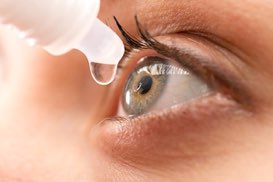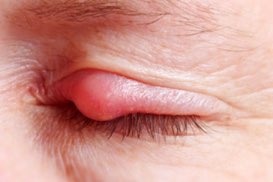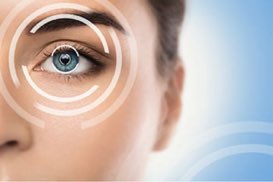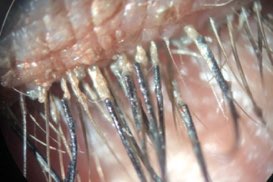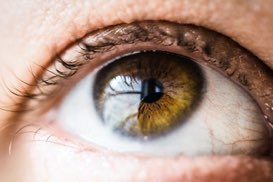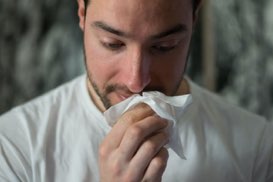Why Treat Demodex?
Demodex in small numbers don’t necessarily need to be treated, but when they are present in large numbers (an overpopulation or an infestation) they can cause significant, irreparable damage to your eyelashes, eyelids, and the glands in your eyelids known as Meibomian glands.
This is why diagnosing and properly treating this condition early on is so important.
In addition, demodex can cause or exacerbate conditions such as dry eye, styes, chalazia, blepharitis, meibomian gland dysfunction, ocular rosacea, and rosacea involving your face.
Treating Demodex
There are two in office treatments that Dr. Muller can perform to facilitate the eradication of your mites:
1. A BlephEx™ treatment is a comfortable in-office procedure performed by Dr. Muller using a revolutionary new patented medical device which employs a high speed rotating micro-sponge soaked in an eyelid cleanser containing tea tree oil to deep clean and exfoliate your eyelids and eyelashes. This procedure thoroughly removes the debris and other remnants of your demodex mites, while clearing the biofilm* from your eyelids.
A numbing drop is placed in each eye prior to treatment. The procedure lasts about 6 -8 minutes, is comfortable and effective.
When a Blephex treatment is performed immediately prior to an in office deep cleanse (below), the Blephex treatment increases the effectiveness of the deep cleanse by increasing the penetration of the medical grade tea tree oil into the meibomian glands, and the eyelash and eyebrow follicles.
2. An in office deep cleanse and debridement can be performed by Dr. Muller using a highly concentrated medical grade tea tree oil. The highly concentrated tea tree oil applied during this in office medical treatment is not suitable for home use (it's too strong/caustic).
A Blephex debridement immediately followed by a deep cleanse using highly concentrated medical grade tea tree oil is the most rapid, most effective way to kill both the adult demodex mites and their larvae (eggs).

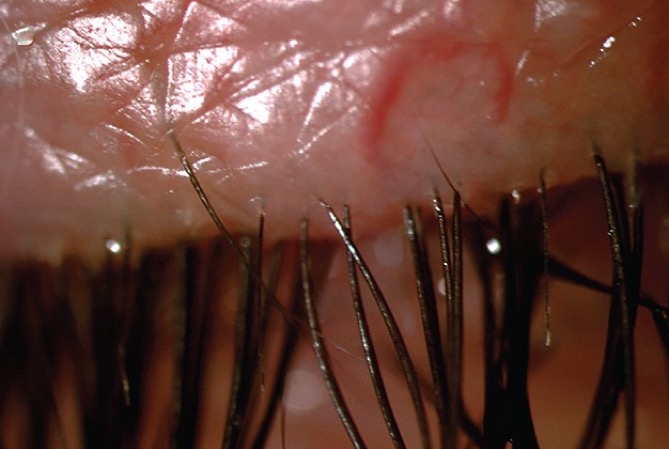
In addition to the in-office treatments above, all patients are given the following instructions for continued at home treatment:
- Wash all sheets, pillowcases, and towels in hot water and dry with the “high” dryer setting.
- Discard all pillows.
- Discard all old makeup and refrain from wearing makeup until the mites are eradicated.
- If you sleep with a partner, he or she must be evaluated for Demodex.
- Purchase and use tea tree soap for your face, and tea tree shampoo for your hair.
- Purchase wipes (towelettes) and foam containing Tea Tree oil and cleanse your eyelids twice each day using them.
-
- Cliradex Demodex Cleansers (4% terpinen-4-ol, an isolated component of tea tree oil): https://cliradex.com/
-
- Start Xdemvy (lotilaner opthalmic solution) prescription eye drops twice daily for 6 weeks. Xdemvy is an anti-parasitic which kills Demodex mites by paralyzing them. https://xdemvy.com
*A biofilm is a slimy, sticky film of bacteria that coats the surface of the eyelids. A biofilm is composed of a well-hydrated matrix of bacteria and their glycocalyx, a sugary coating that allows cells to adhere to and communicate with each other. The eyelid margin with its moisture, nutrients and warmth, is the perfect environment to cultivate a thriving bacterial biofilm. Some people experience an increased frequency of accumulation of a tenacious biofilm along their eyelid margins. These individuals benefit from periodic exfoliation of their eyelids to keep their meibomian gland orifices (openings) uncapped of unclogged. This helps to ensure the health of the meibomian glands, and decrease irritation and inflammation, thus keeping the eyes and eyelids healthier and more comfortable.

